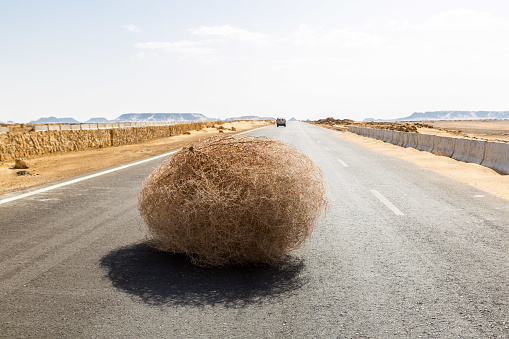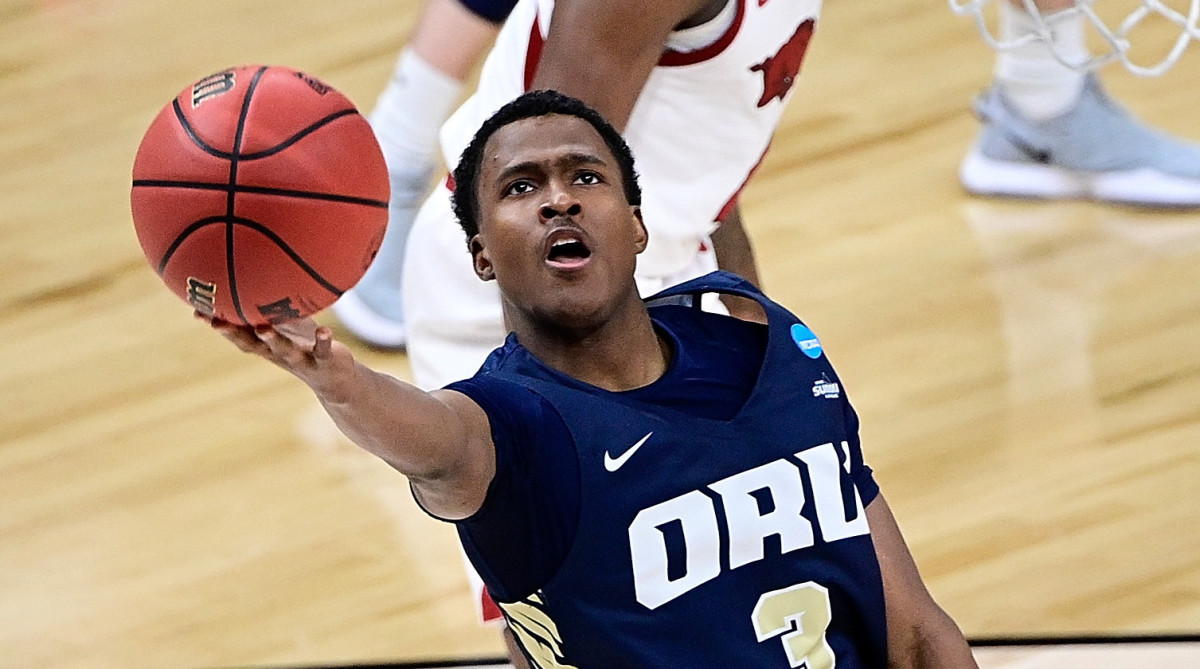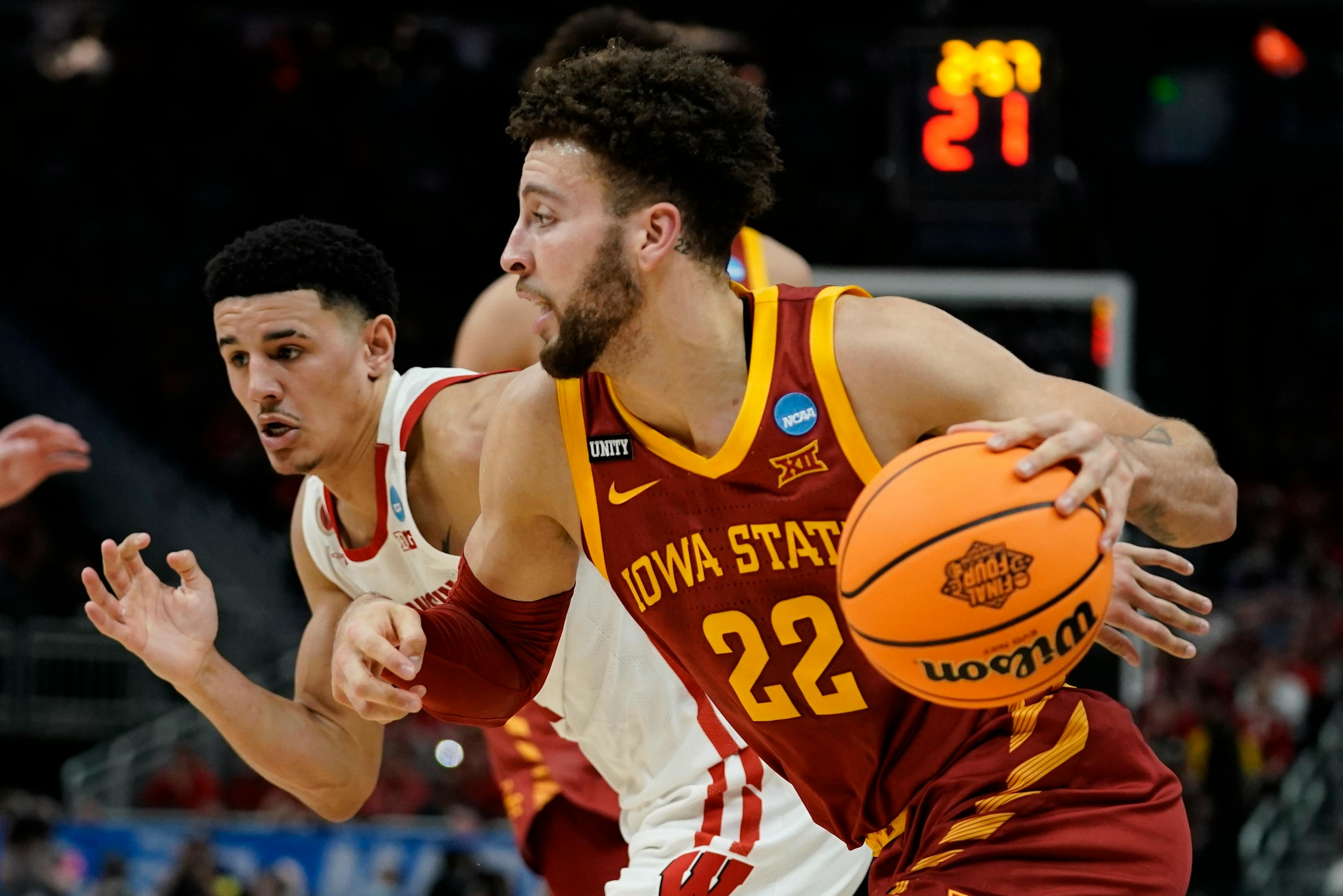 |
| This is a story all about how Brevin's life got flip-turned upside-down. Courtesy of The US Sun. |
The middle of March is
here once again, which usually means spring has either arrived or is at the
airport waiting to board its flight. Sunny days are on the way, and smiles are
returning to the faces, right?
Well…kind of. The forecast for Minnesota the next two days matches the
weirdness of the vibes of this NCAA men’s basketball season – the Dr. Brackets
Homestead is under a winter storm watch until Friday morning. Let’s talk about
how you can heat your home with the fire emanating from your accurate bracket
and avoid wanting to use it as kindling in your fireplace!
This season in men’s college basketball was
replete with weirdness. Alleged crimes, injuries to those who drop dimes, and
otherwise strange times hit teams that find themselves both inside and outside
the tournament field. A sampling:
--The tournament’s top seed, Alabama, has a dark
cloud around the program stemming from one former player and one current star’s
roles in the shooting death of a young woman in January. Darius Miles was (clearly)
booted from the team and faces capital murder charges, and Brandon Miller – one
of the top 5 players in college basketball this year – reportedly brought the
gun to the scene that was eventually used to fire the lethal shots.
Alabama’s coach, Nate Oats, gave the most mealy-mouthed possible response when
the information about Miller’s involvement came to light, essentially waving the
star’s role away with a “kids will be kids, wrong place wrong time” kind of
response. It was a gross and tone-deaf response to a tragic event, and Alabama
is probably going to rally around the reaction to this news with an “everyone’s
against us!!!” kind of message, which is also icky.
--Number two-seeded Texas dismissed its coach, Chris Beard, mid-season after he
was arrested and hit with felony domestic abuse charges stemming from an
argument he got into with his fiancée.
--Texas Tech coach Mark Adams was put on leave
and eventually left his role after it was revealed he tried to persuade his
players to be more amenable to his staff’s advice by quoting Bible verses that
mention the relationship between…masters and slaves. He also may have spit on a
player during a practice. (Probably not a big surprise at this point, but many
big-time college coaches are not good people!!!)
--Michigan’s Hunter Dickinson made some comments
on his podcast (good advice to stay out of trouble: Never tweet or podcast)
that likened Tom Izzo, coach of Michigan State (7-seed in this tournament), to *checks
notes* uhhhh Hitler. “You literally have Hitler as your coach,” was his direct
quote. And then he apologized for those comments and said, essentially, I did
not intend to compare Tom Izzo to Adolf Hitler.
--Matthew Mayer for 9-seed Illinois recently
missed almost a week of practice time after suffering an illness described as
caffeine poisoning. Mayer said he likes to have some energy drinks when he does
some online gaming, and he (inadvertently?) had 6 Monster drinks one day, which
is more Monster drinks than you’re supposed to have in an 80-year life span,
according to many doctors.
 |
| Matthew Mayer, enjoying his new NIL sponsorship deal and, probably, a new liver in 20 years. From Reddit. |
--UCLA had a strong case to fill the winner spot
on your bracket this year, but in the last two weeks, they have definitely lost
star wing and defensive ace Jaylen Clark for the tourney to an Achilles injury and
potentially big man Adem Bona to a shoulder problem.
I’m not even mentioning things like why New
Mexico State – a team that upset UConn in the first round last year! - abandoned
their season amid extremely graphic hazing allegations, or the weirdness around
Jim Boeheim kind-of retiring, kind-of getting fired from Syracuse after
something like 45 years at the university, or the oof-inducing injury sustained
by the guy at the top of this article, Clemson guard Brevin Galloway (I will
spare the details, but if you google “Brevin Galloway injury,” well, it’s the
only injury you’ll read about). But it seemed like an ooky story emerged
basically every week of the NCAA season this year.
So, yes, this season had the overall vibes of a top-shelf track on a mid-level Black Keys album. But like a cyclist struggling with a high-gradient hill with
a Santa Ana headwind, we press on in our quest to create an un-bustable
bracket. Which of these teams and players can make sweet music out of a cacophony
of sour notes and help make your bracket impenetrable this March? Let's talk
about it.
------------
First, the annual "I am not an actual
doctor" disclaimer. I am not an MD, a Ph.D., a
DO, a DDS, or anything like that. But I do very much enjoy the annual updating
of the Warehouse, my collection of scores of data points from what is now a
decade-plus of NCAA tournaments. Running statistical analyses on this data has
uncovered some nuggets of wisdom that may help push you to the top of your
bracket pool. Let's dig into what was revealed in this year's model:
1. Who's Everybody Got:
Last year,
Arizona and Gonzaga commanded 40% of people’s tourney champion selections; this
year, the top two overall seeds Alabama and Houston are being
selected as champ in about 35% of brackets. This is indicative (but not as much
as it should be!) of how much more wide open this year’s tournament is than the
last couple years.
In a typical year, there are somewhere between 1 and 3 teams that are truly “elite,”
that make it to tournament time in the top 10 in both offensive and defensive
efficiency, per the inimitable Ken Pomeroy at kenpom.com. This year…there are
none. Zero! It’s a weird year, I swear!
 |
| Pictured: All the truly elite teams in college basketball this year. From iStockPhoto. |
2. Nailing the Final Four:
So how exactly do you win a bracket pool? You do 2 things:
A. You nail as much of the Final Four as you
can.
B. You gain a small advantage early on by
picking the right upsets.
How do you accomplish A? Often, especially in
pools that a lot of people enter, the highest expected value for your Bracket
Buck is to pick a team to win the title that falls outside of the top few
favorites that most of your competitors will likely pick.
This year, even more than others, it may pay to ”zig” in your tourney champ
decision where others are “zagging.” Combined, the 1-seeds are accounting for
~55-60% of people’s champion picks, but my statistical models don’t even have 1-seeds
Kansas and Purdue as either of the top-2 teams in their
quadrants! Typically, at least one 1-seed makes the Final Four, but this is not
a year where you’ll want to blindly advance the top teams very far!
Typically, you're looking for balanced teams who can score heaps of points but
who still play D well enough to be roughly top 40 or better in defensive
metrics. The teams who best fit this criteria in each quadrant of the bracket
are:
SOUTH: 1) Alabama, and 6) Creighton (#2
Arizona juuuuuust barely misses the top-40 defense criteria, but they do
have a top-5 offense this year).
MIDWEST: 1) Houston, 2) Texas, the best of the 7-seeds,
Texas A&M, and that's it (there’s another near-miss here: #4 Indiana
barely misses on both O and D metrics).
WEST: 1) Kansas, 2) UCLA (#1 in defensive efficiency, though see
Jaylen Clark above), and 4) UConn (2 near-misses in this region: #5 Saint
Mary’s and…#8 Arkansas)
EAST: 1) Purdue along with two other usual suspects… 8) Memphis
(!) and 9) Florida Atlantic (!!!) (#4 Tennessee and #5 Duke
are both near-misses…but Memphis and Florida Atlantic were not! The bottom half
of this bracket has no teams who fit the usual Final Four team profile.)
3. Early
Upsets: We’ve talked about who you might want to lock in for those big-point Final
Four spots. Now, we’ll mention who might get you the advantage in the early
rounds of tourney. Here are the double-digit seeds that are stronger-than-usual
for their seed line this year; whether or not I picked them to steal a game or
2 is entirely match-up dependent:
11) Providence. A Sweet 16 team last year, though their 2022
version had some of the best luck in the 11 years I’ve been
modeling the tourney. In contrast, they fell victim to some TERRIBLE luck in
their stretch of games right before the tournament this year.
12) Charleston,
Drake, VCU, and Oral Roberts. Yes, this is all 4 of them. My
model has all 4 12-seeds as somewhere between 7- to 10-seed quality teams. If
you don’t know what to make of this, imagine how I feel!!!
 |
| Max Abmas and Oral Roberts are back and ready to wreck your weekend. From Sports Illustrated. |
13) 13s were en vogue upset selections by all the top bracket prognosticators last year (cough pretty much only me cough), but they ended up going 0-4. But all 4 were competitive into the last 2 minutes of their games! This year, Kent State and Iona have profiles better than most past 13-seeds.
14) Kennesaw State is slightly better than their seed line. Slightly.
15) Colgate is not terrible, they’ve got several guys with tourney experience on the team, and they’ve put a scare into teams as 14-seeds the past two years. Texas is very good, but, ahh, see the Chris Beard thing above, and they also lost to 14-seeded Abilene Christian two years ago.
4. Extremely skewed profiles: Last year, I mentioned there were many more teams with “skewed” profiles than we typically see in the tournament. Usually, we see 5-6 teams in the field that are heavily skewed great O/mediocre D, or vice versa (top-40 efficiency in one, sub-100 efficiency in the other). Last year saw an enhancement of that trend with 8 such teams.
This year, there are FOURTEEN.
The teams that skew toward good O/bad D are: Baylor (3-seed), Miami (5), Missouri (7), Iowa (8), Penn State (10), Providence (11), Pittsburgh (11), Oral Roberts (12) and Furman (13).
The bad
O/good D teams? Iowa State (again) (6), Northwestern
(7), Arizona State (11), VCU (12) and Kent
State (13)
What does
this skew mean for their prospects in the tourney? Well, the 43 skewed teams in
the last 10 tournaments have averaged about 1 tourney win between
them. More than half failed to win one game. Last year’s 8 skewed teams
won…8 games. And only 4 of those teams won even one game. The O-skewed teams
won 6 of those games; only Iowa State won a game of the D-skewed teams, and
they lost to O-skewed Miami in the Sweet 16.
 |
| Can former Gopher Gabe Kalscheur and Iowa State buck the skewed team trend again? From the Star Tribune. |
Don't pick any of these squads to cut down the nets; only 2 of the 43 have reached the Final 4, and they were both bad O/good D teams (Louisville '12 and the out-of-nowhere South Carolina '17 team; both were defeated in the national semifinals).
5. Picking 7-10 and 6-11 upsets: In these two categories, you typically see a pretty good higher-major team who may have had a stumble at some point in the year against either some ferocious mid-majors or other high-major teams with high ceilings but also some bad blemishes on their resumes. Balanced teams in the 10- and 11-seed lines are a place to look for potential upsets here (top 50 in both offensive and defensive efficiency).
Who fits the bill among this year’s 10s and 11s? USC (10) hits it, and Nevada juuuuust misses the criteria, so they’re worth a look against TCU, if the Wolfpack can win their play-in game.
6. Injuries and suspensions: The late-season injury/left-the-team bug is often a difficult thing to account for in your bracket picking. Instances from the last couple weeks have occurred late enough in the season that the advanced analytics haven’t yet adjusted to fully “price in” these absences or their potential effect on their teams' journeys through the tournament.
These are worth knowing about and monitoring, as some of the players on this list are key contributors for their teams, and their absences could tip the scales in favor of their opponents if these players either aren’t on their teams’ rosters or can't get cleared in time for their tip-offs. Here's a list of the injuries and other departures you should know about this year, and keep in mind: injuries to point guards and big men often hurt the most in March. (Number denotes team's seed)
1) Houston – Marcus Sasser (starting combo guard and leading scorer, 17ppg/3apg) QUESTIONABLE for 1st weekend, recovering from a groin injury in his conference tournament.
1) Kansas – Kevin McCullar (senior wing, great defender, 11ppg/7rpg) QUESTIONABLE for first round with a back issue that’s been recurring for him.
2) UCLA – Jaylen Clark (Starting guard, one of the best defenders in the country, 13ppg/6rpg) OUT with an Achilles injury
Adem Bona (Freshman big man, 8ppg/5rpg/2bpg) QUESTIONABLE for round 1, picked up a shoulder injury in Pac-12 tournament.
3) Xavier – Zach Freemantle (starting senior big man, 15ppg/8rpg/3apg) OUT for tournament; had foot surgery 2 weeks ago.
4) Virginia – Ben Vander Plas (starting forward, 7ppg/5rpg) OUT for tournament with broken right hand suffered in last 2 weeks.
4) Tennessee – Zakai Ziegler (starting point guard, 11ppg/5.5apg) OUT for tourney, tore his ACL in last 2 weeks.
5) Miami – Norchad Omier (starting big man, 14ppg/10rpg) QUESTIONABLE for round 1 with sprained ankle; significant because he’s the guard-oriented Miami’s only big inside presence.
6) Iowa State – Caleb Grill (Senior guard, 9.5ppg/4rpg) KICKED OFF THE TEAM two weeks ago.
6) TCU – Eddie Lampkin (starting big man, 6ppg/6rpg) LEFT THE TEAM just before the tourney.
 |
| PICTURED: Eddie Lampkin. NOT PICTURED ANYWHERE DURING THIS YEAR'S TOURNEY: Eddie Lampkin. From TCU Athletics. |
7. Floor Generals: Wow, that was quite a few high-seed teams potentially missing some key players, wasn't it? Thankfully, most teams’ main ball handlers made it to the tourney unscathed. Here's one of my favorites stats that I bring up every year. If you've got a steady presence as your point guard/primary ball handler, your team may be in for a longer stay at the tourney.
Over the past 10 years, if your team has a "floor general" who averages at least 3.8 assists per game, you win about a half-game more than teams who don't. And 34 of the past 40 Final Four teams (and 3 out of 4 last year – and the team who didn’t have one (Villanova) had one of the best PGs in the country in Collin Gillespie) have had a floor general toting the rock up the court. So having a capable point guard (or point forward! We refuse to commit Trayce Jackson-Davis erasure here at the Dr. Bruffy Blog) helps both the mid-level seeds get a win or 2, and the top teams achieve long runs.
I usually bring this up to pinpoint which teams lack this resource as candidates for early exits, because usually, your 1-, 2- and 3-seeds possess a player that fits this criteria. This year's pack of notable floor general-less teams includes: Gonzaga, Tennessee (poor Zakai), San Diego State, Miami, St. Mary’s, Duke (all 4 5-seeds!), Missouri, Maryland, West Virginia, Iowa, Illinois, and Florida Atlantic.
8. Overseeded/Underseeded: I already pointed out above some discrepancies I see among many of the lower seeds. But there are seed shifts everywhere that I would make were I in charge of such a thing!
Who got more respect than they deserved? Who got the shaft and faces a harder
road because of it? Let's find out!
Underseeded:
Tennessee had the resume of a 2-seed…before the news about Zakai
Ziegler, anyway.
UConn is
another 4 that has a good case to be a 2-seed.
Texas
A&M and Arkansas are two big-conference
schools that should each be about 2 seed lines higher than they are.
Exciting
mid-major teams often get disrespected on their seed lines, and this year was
no different. My model has Florida Atlantic as a 6-seed (and sadly, the
team they play, 8-seed Memphis is really more of a 5).
It also
had Charleston as a 9-ish seed team, Utah State seeded about 2-3
lines too low, and Drake as a team good enough to be a 9/10 seed.
 |
| Roman Penn: Point guard for Drake, and also, my favorite kind of writing utensil. From Drake Athletics. |
Overseeded:
Kansas
State started hot this year, but has really cooled in
the past month; the model has them as a 6-seed.
Xavier can shoot
the lights out but is deficient on defense; they were more deserving of a
~5-seed.
Virginia without
Vander Plas and the stifling defense of past years is a 6/7-seed in 4-seed’s
clothing.
Indiana has a recent
history of choke jobs and a just-OK resume outside of their impressive Purdue
wins. More of a 6/7 seed.
Missouri and Penn
State are two trendy picks that a lot of prognosticators are picking to make
some noise, but my model says they should each be about 2-3 seed lines lower
than what they were granted.
Iowa plays no
defense and is essentially playing a road game against Auburn (in Birmingham) –
they should be a 10/11.
9. Round 1 Best Bets: Minnesota took a big step toward legalizing sports
betting in the ongoing legislative session, but for this year, locals will have
to traverse to a border state to place wagers on tourney action. I likely won’t
be making such a trip this year, so clearly these picks are just educated
guesses for fun. Feel free to make these wagers if you plan to be in Vegas or a
different gamblin' state in the next couple days, though. (I think I went 4-4
last year, so, ya know. WOO BIG MONEY.)
THURSDAY
Furman +5.5 vs Virginia
Arizona -14.5 vs Princeton
Arkansas -2 vs
Illinois
Auburn -1.5 over Iowa
FRIDAY
Kennesaw
State +12.5 vs Xavier
St. Mary’s -4 vs. VCU
Drake +2 vs Miami
Grand
Canyon/Gonzaga over 156
------------
That's all
I've got for 2023, everyone. Have a great 1st weekend of the tournament,
and let’s all hope Kevin Harlan gets to do play-by-play of an idiot running onto the court sometime.

In a tournament known for its unpredictability, having tips and tricks that go beyond the traditional statistics and rankings can be valuable. It adds an element of excitement and intrigue to the tournament experience, allowing fans to engage with the games in a whole new way.What is vpn encryption and how does it work
ReplyDelete